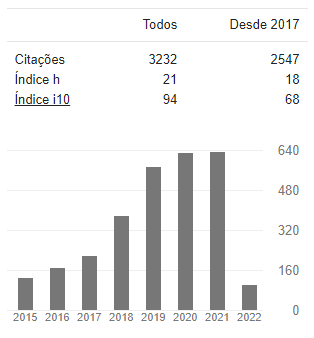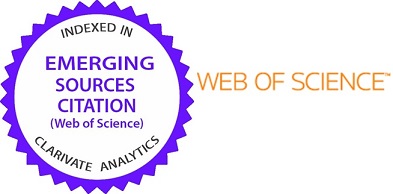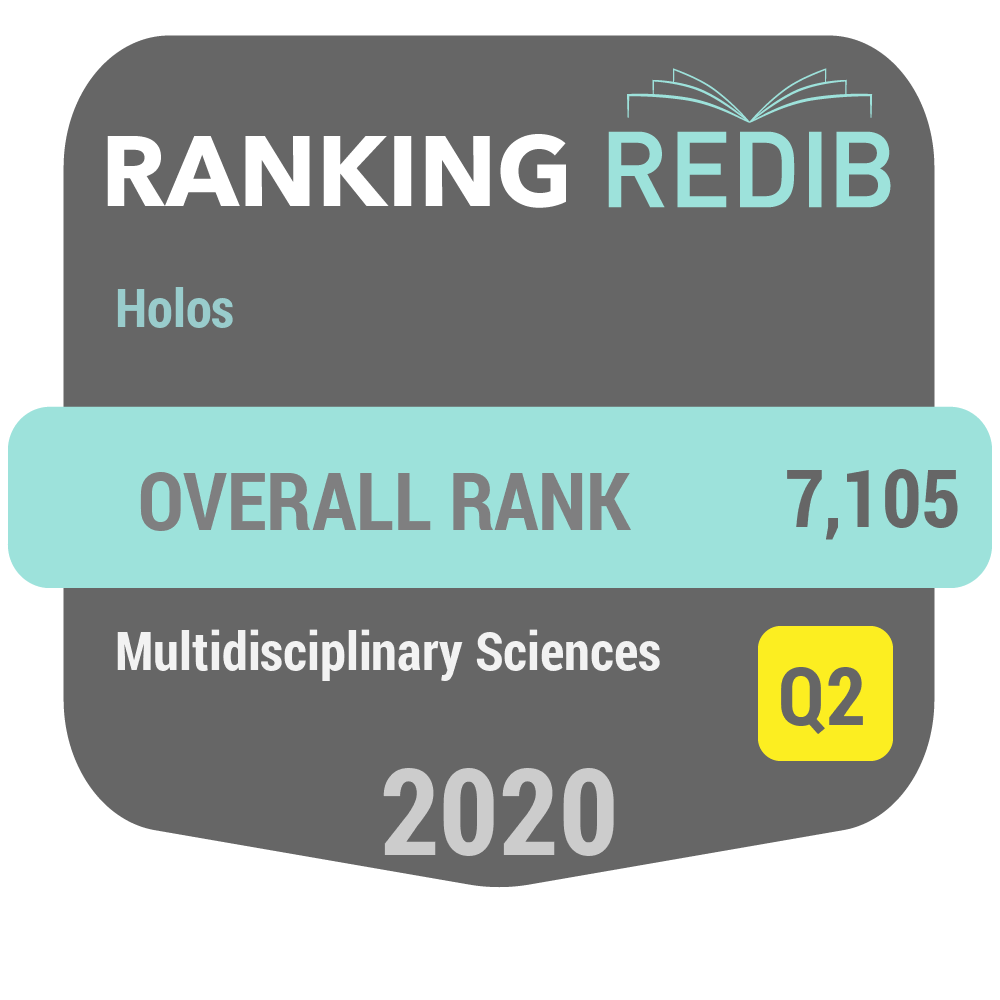INTERREGIONAL TOURISM COOPERATION: A EUROPE CASE STUDY
DOI:
https://doi.org/10.15628/holos.2017.5263Palavras-chave:
tourism, European Union, regional policy, interregional cooperation, INTERREGResumo
The purpose of this article is the answer of the question if interregional cooperation supported by economic policy of UE fosters tourism development and if yes in what way. The relation between tourism and interregional cooperation is relatively seldom analysed in comparison with other strands of territorial cooperation such as crossborder and transnational cooperation. This results from specific philosophy of interregional cooperation.
In order to achieve the purpose of the paper it was necessary to present the system of interregional cooperation management and model of tourism in European Union. The paper analyses the period 2007 – 2013 when INTERREG IVC provided funding for interregional cooperation across Europe.
The overall objective of the INTERREG IVC Programme was to improve the effectiveness of regional policies and instruments with special attention to the areas of support such as:
• innovation and the knowledge economy,
• environment and risk prevention.
Tt could be assumed that it had been possible to include tourism in tourism projects implemented within Interreg IV C. To prove it the qualitative and quantitative analysis of 204 projects divided into 12 themes has been done. Aditionally the database of good practices was analyzed. The analysis of its documents allowed to identify 60 tourism-related good practices. These practices focused on cultural and sustainable tourism.Downloads
Referências
BALAZ V., (2006), Slovakia: EU accession and Cross-border Travel, in: Hall D., Smith M., Marciszewska B., (eds.), Tourism in the New Europe The challenges and opportunities of EU enlargement, CAB International Publishing, London.
Better Policies through Interregional Cooperation: experience and good practice from north area countries (2011), INTERREG IVC European Regional Development Fund, European Union.
BUCZKOWSKI ?., ?UKOWSKI L. (2014), Formy wspó?pracy mi?dzynarodowej lokalnych jednostek samorz?du terytorialnego, in: Feret E., Niemczuk P. (eds.), 10 lat do?wiadcze? polskiego samorz?du terytorialnego w Unii Europejskiej, Wy?sza Szko?a Prawa i Administracji Rzeszów-Przemy?l, Rzeszów-Przemy?l.
CAPP A., (2012), Cultural European Routes: Transfer Experiences, Share Solutions (Certess), “International Journal of Heritage in the Digital Era January 2012” no 1, pp. 175-179.
CASTRO J., (1999), The Other Dimension of Third Level Politics in Europe: The Congress of Local and Regional Powers of the Council of Europe, in: Aldecoa F., Keating M. (eds.), Paradiplomacy in Action The Foreign Relations of Subnational Governments, Frank Cass Publishers, London Portland.
CELATA F., COLETTI R., (2015), Cross-border Cooperation along the EU’s External Frontiers, in: Celata F., Coletti R., (eds.), Neighbourhood Policy and the Construction of the European External Borders, Springer, Cham Heidelberg New York Dordrecht London.
DEFFNER A, METAXAS T., (2010), Place branding, local identity and branding cultural images in Southern Europe: Nea Ionia, Greece and Pafos, Cyprus, in: Asworth G., Kavaratzis M., (eds.), Towards Effective Place Brand Management Branding European Cities and Regions, Edward Elgar, Cheltenham, Northampton.
DUHR S., COLOMB C., NADIN V., (2010), European Spatial Planning and Territorial Cooperation, Springer, Routledge, London and New York.
European Charter of Local Self-Government, (1985), European Treaty Series, No. 122
European Charter of Regional Self-Government (1997), Recommendation 34.
Experience – Cooperation – Development Regions of enlarged Europe sharing solutions (2009), INTERREG IVC European Regional Development Fund, European Union.
FABY H., (2016), Tourism policy tools applied by the European Union to support cross-border tourism, in: Wachowiak H (ed.)., Tourism and Borders Contemporary Issues Policies and International Research, Routledge, London and New York.
Fact Sheet; Historical view of Interreg / European Territorial Cooperation (2015), http://admin.interacteu.net/downloads/9301/INTERACT_Programme_Management_Handbook_Factsheet_Historical_view_of_Interreg.pdf, (10.08.2016)
FESENMAIER D.,, O’LEARY J., UYSAL M., Recent Advances in Tourism Marketing Research, Routledge, New York London.
GROBELNA A., MARCISZEWSKA B., (2016), Work motivation of tourism and hospitality students: implications for human resource management, (in:) Bagnoli C., Mio Ch., Garlatti A., Massaro M. (eds.), Proceedings of the 8th European Conference on Intellectual Capital, ECIC 2016, Ca' Foscari University of Venice, Academic Conferences and Publishing International Limited, UK, pp. 95-103.
Guide on EU Funding for the tourism sector 2014-2020 (2016), European Union.
HASELSBERGER B., (2014), Decoding borders. Appreciating border impacts on space and people,” Planning Theory & Practice”, Volume 15, Issue 4, pp. 505-526.
INTERREG IVC Programme Manual (2008), European Regional Development Fund, European Union.
INTERREG IVC West area regions - Benefitting from interregional cooperation (2012), INTERREG IVC European Regional Development Fund, European Union.
INTERREG IVC, http://www.interreg4c.eu/programme/funding/, (10.08.2016)
Interregional cooperation in South area region (2013), INTERREG IVC European Regional Development Fund, European Union.
Interregional Cooperation Programme INTERREG IVC Contributing to the European Commission Initiative “Regions for Economic Change”, CCI 2007CB163PO046 Operational Programme 26 July 2007 Updated on 9 September 2011.
KENTNOWSKA K., (2012), Rozwój form wspó?pracy samorz?dów na poziomie mi?dzynarodowym, in: Dolnicki B., (ed.), Formy wspó?dzia?ania jednostek samorz?du terytorialnego, Lex a Wolters Kluwer Business, Warszawa.
Key features of Capitalisation projects (2009), INTERREG IVC European Regional Development Fund, European Union.
KUTUKOV A. (2006), Mezhregional'noe i prigranichnoe sotrudnichestvo gosudarstv - uchastnikov SNG: problemy i perspektivy: informacionno-analiticheskij doklad, Ispolnitel'nyj Komitet SNG, Moskva.
MARCUT M., (2015), The Socioeconomic Evolution of the European Union Exploring the Electronic Frontiers, Springer, Cham.
MC KEEVER P., LARWOOD J,, MC KIRDY A., (2006), Geotourism in Ireland and Britain, in: Dowling R., Newsome D., (eds.), Geotourism, Elsevier, Oxford.
MORATA F., NOFERINI A., (2013) The Pyrenees – Mediterranean Euroregion Functional Networks actor perceptions and expectations, in: BelliniN., Hilpert U., (eds.), Europe's Changing Geography: The Impact of Inter-regional Networks, Routledge, New York.
MORGAN N., (2010), Interregional cooperation: the benefits of sharing, http://2007-2013.at-cz.eu/at-cz/downloads/Newsletters/INTERACT_Newsletter_No_6_September_2010.pdf (10.08.2016)
PERKOWSKI M. (2012), G?ówne podstawy prawnomi?dzynarodowe aktywno?ci zagranicznej samorz?du terytorialnego w Europie, “Bia?ostockie Studia Prawnicze”, vol. 12, pp. 13-22.
PEROSA P., MENOTTI M., SARACENI F., (2008), Il turismo accessibile La vacanza come diritti per tutti, in: Magistrali G., (ed.) Turismo sociale, Magioli S.p.A., Dogana
SCHUTZE R., (2015), European Union Law, Cambridge University Press, Cambridge.
SHARMA K. (2004), Tourism and Economic Development, Sarup and Sons, New Delhi.
STUDZIENIECKI T., (2015), Europejskie Ugrupowania Wspó?pracy Terytorialnej uj?cie podmiotowe, przedmiotowe i przestrzenne, Academia Europa Nostra, Lubieszynek
STUDZIENIECKI T., (2016), The development of cross-border cooperation in an EU macroregion – a case study of the Baltic Sea Region, “Procedia Economics and Finance” vol. 39, pp. 235 – 241.
SZYMANSKI J., (2011), The basic legal instruments for cross-border cooperation in the framework of the Council of Europe, “Bia?ostockie Studia Prawnicze”, No 9, pp. 90-109.
TEREM P., (2010), Transfrontier regions as Bridges of European Integration Process, in: Rouet G., Terem P., (eds.) Ukraine between integration and partnership, Etablissements Émile Bruylant, Bruxelles
WASSENBERG B., REITEL B., PEYRONY J., (2015), Territorial cooperation in Europe a historical perspective, Publications Office of the European Union, Luxembourg.
What is The INTERREG III Programme?, (2003), http://milieukontakt.net/archive/nl/act/docs/INTERREG%20IIIC%20Leaflet_E.pdf, (10.08.2016)
WILLIAMS H. (2012), The contribution of Spatial Planning to Social Cohesion in the European Union, in: Haller M. (ed.), The making of the European Union Contribution of the Social Sciences, Springer, Berlin Heidelberg New York.









































